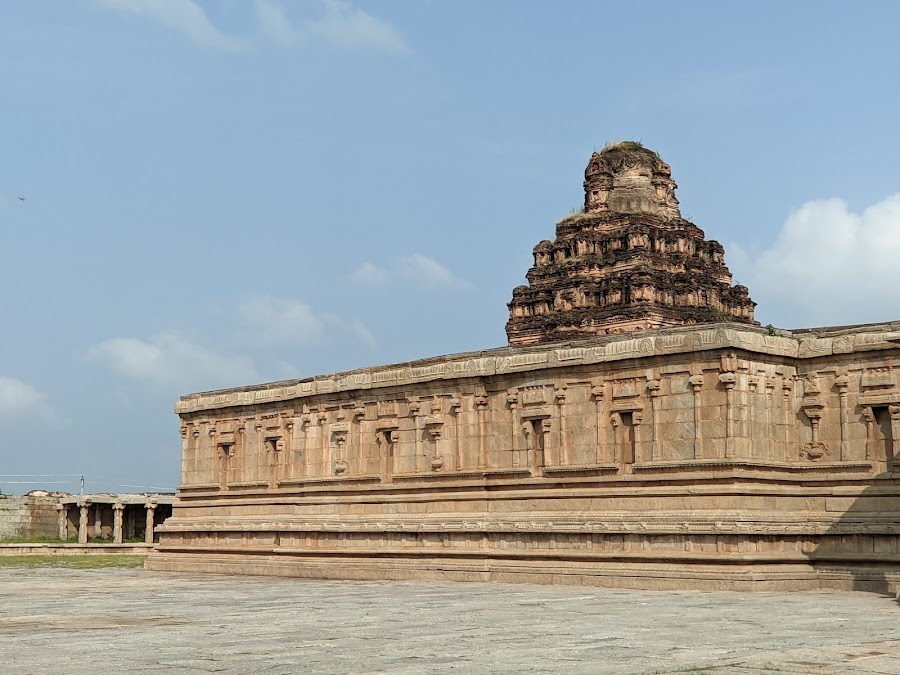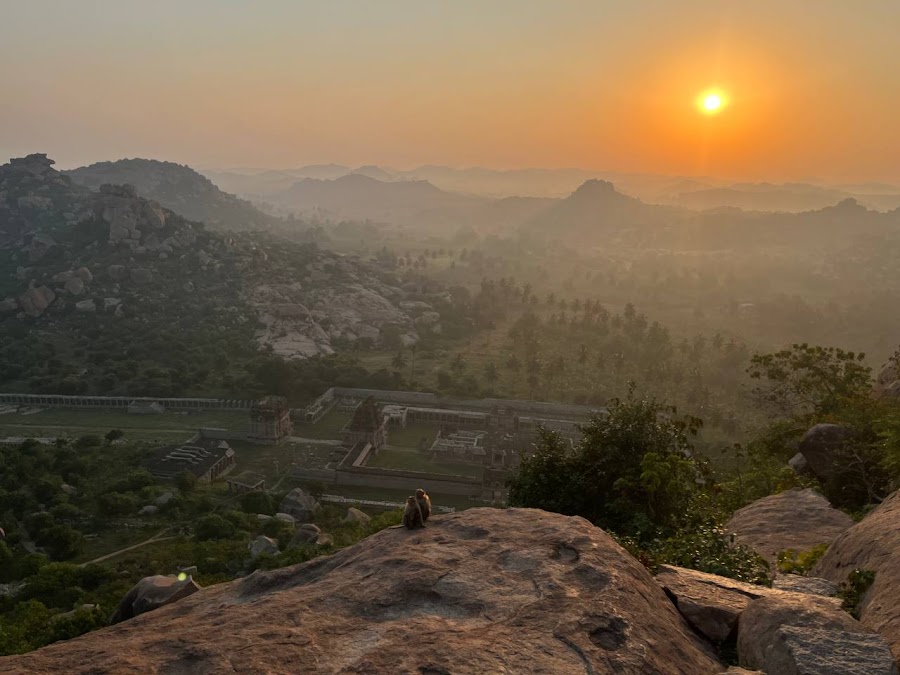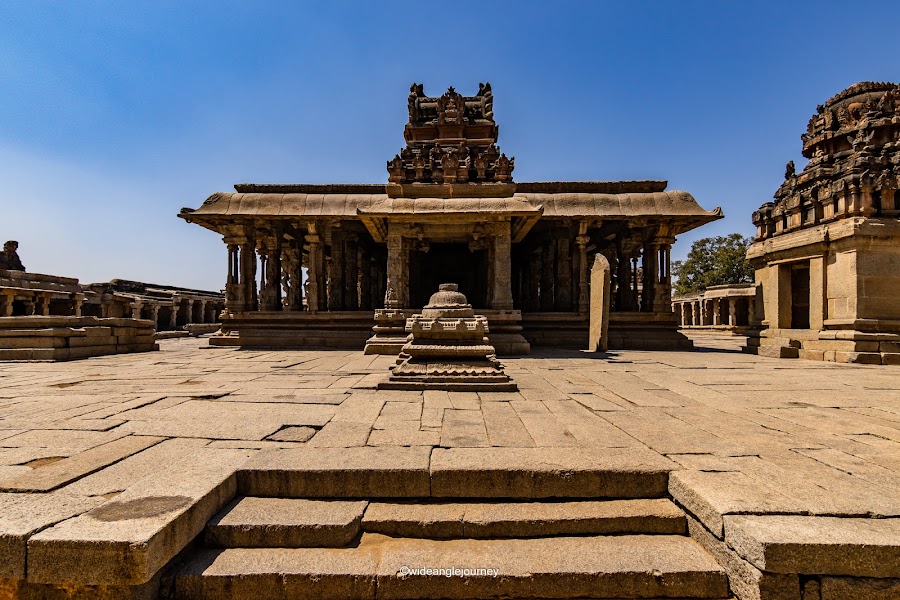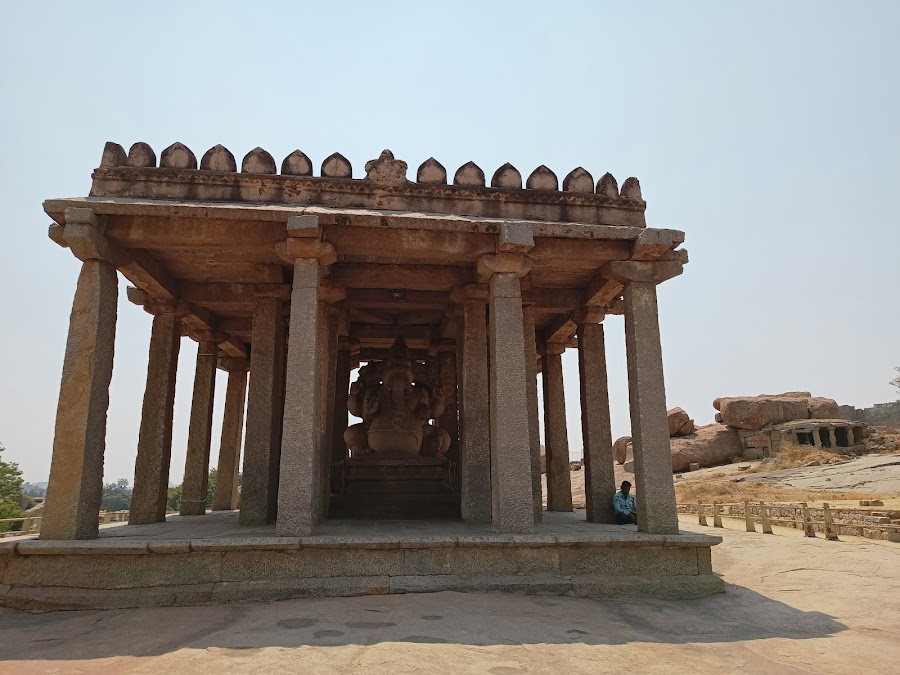Kadalekalu Ganesha
Hampi, Karnataka, India
Hey adventurers! Meet Kadalekalu Ganesha in Hampi, a giant statue of Lord Ganesha! 'Kadalekalu' means 'Bengal gram' in the local language, because his tummy looks like one! This huge Ganesha sits inside a cool temple and has been here since the Vijayanagara Empire times. It's a super cool spot to visit in Hampi!


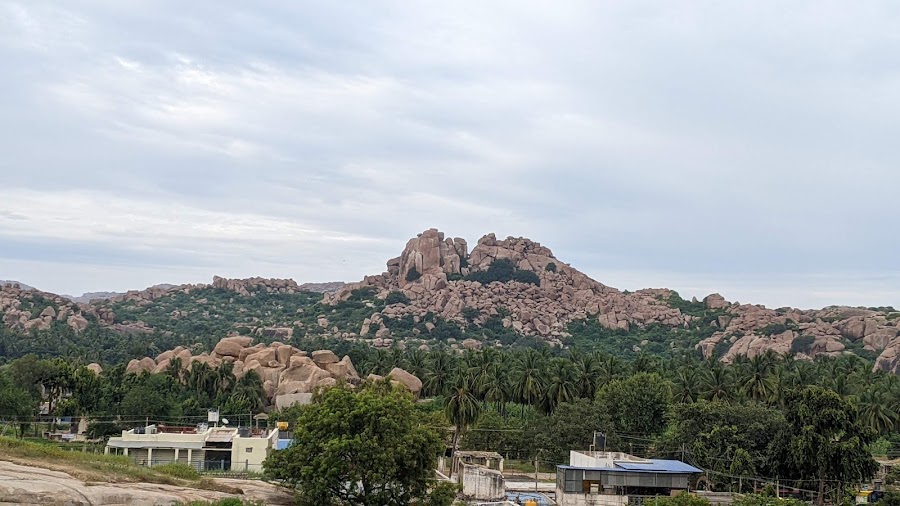
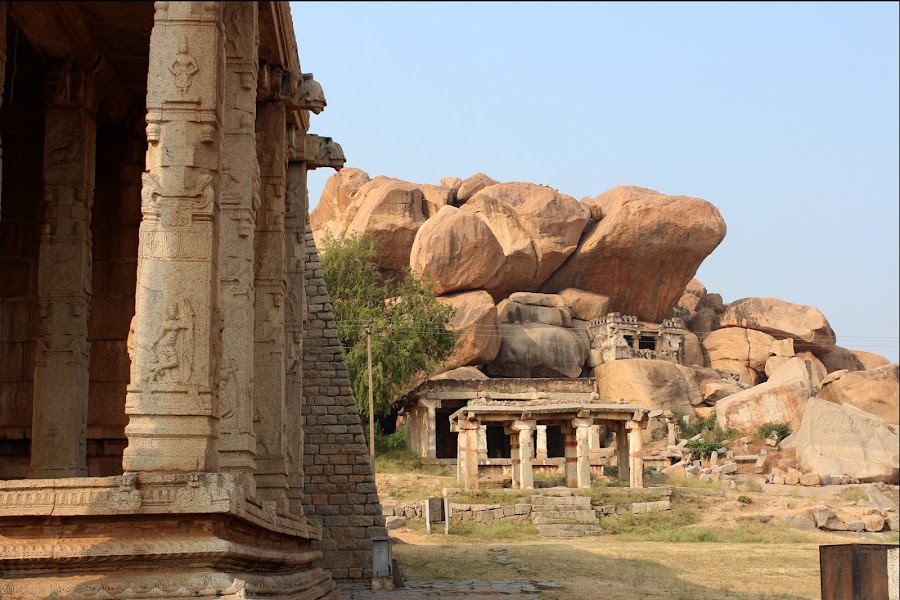
Interactive Map
Key Activities
Additional Places
Reviews
Map View
Top Activities in Kadalekalu Ganesha
- 1
Capture Stunning Photographs Of The Intricate Carvings And Architectural Details
- 2
Explore The Temple Complex And Admire The Monolithic Ganesha Statue
Detailed Information
Best Time to Visit
October-March
When to visit place on the day
Approximate expense
₹500 per person
History
The Kadalekalu Ganesha Temple dates back to the Vijayanagara era, specifically to the early 16th century. It was commissioned by a prominent Vijayanagara king, Krishnadevaraya, as an offering for the victory over the Gajapatis of Odisha. The temple stands as a testament to the architectural prowess and artistic brilliance of the Vijayanagara artisans. The massive granite boulder used for the Ganesha statue was transported from a nearby quarry, showcasing the engineering skills of the time. Over the centuries, the temple has withstood the test of time and remains an important religious and cultural site, attracting pilgrims and history enthusiasts alike.
Recent Google Reviews
Kadalekalu Ganesha is a famous monolithic statue located in the ancient town of Hampi, Karnataka, India. This statue, carved out of a single granite boulder, stands at about 4.5 meters (15 feet) tall and is one of the largest sculptures in Hampi. It is situated on the slopes of the Hemakuta Hill, near the Virupaksha Temple complex. Visitor Note: Location: The statue is situated on Hemakuta Hill, near the Virupaksha Temple in Hampi. It is a short hike from the temple complex. Best Time to Visit: -Morning or Evening: To avoid the midday heat and enjoy the tranquil atmosphere. - Winter Months (October to February): The weather is more pleasant for exploring Hampi. Entry Fee: There is no specific fee for visiting Kadalekalu Ganesha; however, some nearby monuments in Hampi may have entry charges. Photography: Photography is allowed and highly recommended to capture the intricate details of the sculpture and the surrounding architecture. Accessibility: The site requires a bit of walking and climbing steps. Wear comfortable footwear and carry water, especially during warmer months. Cultural Etiquette: - Maintain silence and respect the sanctity of the site, as it is a religious place. - Avoid touching the statue or carvings to preserve their integrity. - Dress modestly in keeping with the spiritual significance of the location. Tips for Exploring Nearby: - Visit the Hemakuta group of temples located nearby for a panoramic view of Hampi’s landscape. - The Virupaksha Temple and Sasivekalu Ganesha are within walking distance. Carry your Water bottles and snacks as not much shops are available. Please DONOT litter the place. About Temple: The name "Kadalekalu" translates to "Bengal gram" (a type of lentil) in Kannada, as the belly of the Ganesha statue resembles the shape of this legume. The statue showcases the Vijayanagara style of architecture, known for its intricate carvings and monumental sculptures. The sanctum housing the statue is surrounded by a beautiful pillared mandapa (hall), featuring ornate carvings depicting mythological themes, floral motifs, and traditional stories. Kadalekalu Ganesha is a testament to the rich cultural and religious heritage of the Vijayanagara Empire, which ruled the region in the 14th-16th centuries. Lord Ganesha is widely worshipped as the remover of obstacles, and this statue is a significant site of devotion for pilgrims and tourists visiting Hampi. Visitors often marvel at the craftsmanship and serene ambiance of the site, which offers a panoramic view of the rocky terrain and ruins of Hampi. Team-MusafirHunYaaron
The Kadale Kalu Ganesha, located a few meters east of the Vishnupada shrine in Hampi, is a monumental example of the artistic and cultural richness of the Vijayanagara era. This imposing 4.5-meter-tall monolithic sculpture of Lord Ganesha, carved out of a massive boulder, stands as a testament to the craftsmanship and devotion of its creators. The term "Kadale Kalu," meaning "gram seed" in Kannada, reflects the local nomenclature inspired by the shape of the deity's form. Carved with intricate skill, the idol depicts Lord Ganesha seated on the lap of his mother, Goddess Parvati—a detail visible only when viewed from behind. The sanctum that houses this grand idol is complemented by an elegant pillared mandapa at the front. The mandapa's slender, intricately sculpted Chitrakhanda-style pillars are adorned with carvings depicting scenes from the daily lives of common people as well as representations of Hindu gods and goddesses. These early Vijayanagara pushpapodigai corbels add a unique charm, showcasing the architectural brilliance of the period. Dating back to the 16th century AD, the Kadale Kalu Ganesha is more than just a marvel of monolithic art. It serves as a symbol of spirituality, representing Lord Ganesha as the remover of obstacles. The combination of devotional significance and architectural elegance makes this monument a cherished heritage site, drawing visitors and devotees alike to appreciate its timeless beauty and historical importance.
Idol made from a single piece of rock. Front is lord Ganesha and back is Goddess Gowri! Lot bigger than Sasivekalu Ganesha! Learnt that Ganesha idol was carved first and temple was build later on!
We reached Hampi around 4 PM and after a quick freshen-up, decided to head out to catch the sunset at Hemakuta Hill. It's located right next to Virupaksha Temple, with steps that take you up to this peaceful hilltop. On the way, we came across a beautiful temple complex that houses an enormous monolithic idol of Lord Ganesha, known as Kadalekalu Ganesha. The intricate carvings on the temple’s pillars and the size of the idol are truly impressive. From here, you get an amazing view of Virupaksha Temple and the surrounding landscape. Hemakuta Hill is also home to another large idol called Sasivekalu Ganesha, which is just as awe-inspiring. Both idols are so intricately crafted, giving you a glimpse into the rich artistry of the Vijayanagara era. We found Hemakuta Hill to be the perfect spot to watch the sunset. The view of Hampi from the hill is stunning, with its ancient structures bathed in golden light. The atmosphere here is peaceful, making it a lovely place to relax and take in the beauty of Hampi. If you're in the area, it’s definitely worth a visit, especially as the sun sets.
